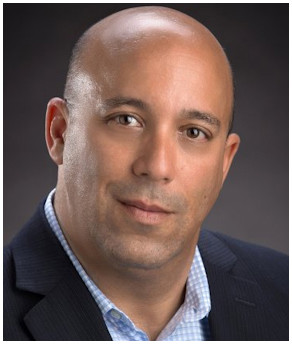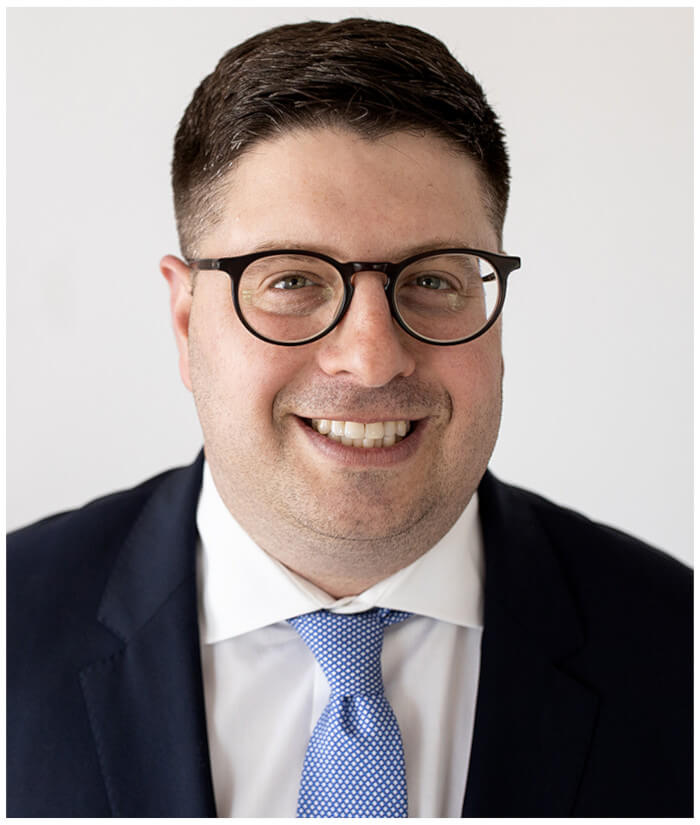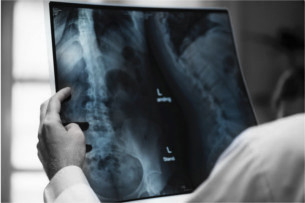Lack of Nursing Oversight Leads to Opioid Overdose and Wrongful Death
Medical Malpractice Case: History
Jim Parre was admitted to a rural hospital for an elective abdominal surgery. The surgery was successful and uneventful. After surgery, Mr. Parre was taken to the post-anesthesia recovery unit, and when he met pre-established PACU discharge criteria, was moved to a regular floor in the hospital.
Mr. Parre’s post-operative pain medications included two opioids: (1) Fentanyl, which was to be administered by continuous epidural infusion; and (2) Morphine, which was to be delivered by PCA pump. (PCA stands for “patient controlled analgesia.” The patient essentially doses himself by pressing a button. How many times the patient can press the button, and how much Morphine is given with each press, is controlled by the settings on the pump, which are set in accordance with a doctor’s orders.) Pursuant to hospital policies and physician orders, the nursing staff was required to monitor Mr. Parre’s response to the opioid medications every four hours, including his vital signs and level of sedation. The purpose of such monitoring is to make sure the opioids are giving adequate pain relief without causing excessive sedation.
Over the course of the afternoon, evening, and night of his surgery, Mr. Parre’s condition was stable. At 8am the next day, his vital signs were normal, but his pulse-ox was borderline low at 92%. The nursing staff was supposed to give Mr. Parre oxygen if his pulse-ox fell below 92%, per physician orders. Unfortunately, the nursing staff did not document his pulse-ox throughout the rest of the morning and afternoon.
At 3:30pm, a nurse came into Mr. Parre’s room to check on him. He appeared to be sleeping. She documented in the chart that Mr. Parre was “drowsy but arouses easily.” Sometime between 4:00pm-4:17pm (the records are not clear and none of the witnesses could recall a precise time), a nurse’s aide came into Mr. Parre’s room to take his vital signs. After taking his blood pressure, temperature, heart rate, and pulse-ox, she began to assess his respiratory rate. She noticed that he was breathing “funky,” so she went into the hallway and asked the closest nurse to come into the room to assess the patient.
The nurse recognized that Mr. Parre was unarousable and struggling to breathe, so she called a rapid response team. While waiting for the rapid response team to arrive, Mr. Parre’s blood pressure began to drop, and the nurse was unable to palpate his pulse. A Code Blue was called at 4:25pm. The Code Team gave Mr. Parre the drug Narcan in an attempt to reverse the respiratory depression caused by the opioids he had been receiving. The Narcan was ineffective because his blood pressure was too low to circulate the medication to his brain.
Eventually, Mr. Parre was resuscitated and transferred to the ICU. There, he coded again and was resuscitated again before being transferred to a city hospital. The following day, a CT scan of his brain revealed a global, hypoxic injury. Mr. Parre was pronounced dead later that evening.
An autopsy was performed, and the findings were consistent with an opioid overdose causing respiratory and cardiac arrest, except for one thing: a 3cm hemorrhagic infarct of the cerebellum was discovered. In other words, there was a large area of brain tissue that was dead because of a bleed in the area of the brain that controls important body functions. However, although the pathologist who performed the autopsy made slides of the affected brain tissue, the pathologist failed to describe what he saw on the slides. This left a significant question about the cause of Mr. Parre’s death: did he have a brain bleed that caused him to stop breathing, or did the brain bleed occur as a “reperfusion injury” when Mr. Parre was resuscitated during the first Code Blue? If it was the former, then his death was not due to a medical mistake. If it was the later, then the failure of the nurses to monitor Mr. Parre’s response to pain medications led directly to his death.
Medical Error Case – Discovery
The Eisen Law Firm met with Mr. Parre’s wife to discuss a potential wrongful death lawsuit. After opening an estate in probate court, The Eisen Law Firm obtained a copy of Mr. Parre’s medical records from both hospitals. It was readily apparent from the records that this case involved complex medical issues and would require a significant investment of time and resources.
The Eisen Law Firm initially consulted with a physician who is board-certified in Hospital Medicine to discuss whether there were any breaches in the standard of care by the physicians and nursing staff at the rural hospital, and whether any such breaches were a proximate cause of Mr. Parre’s death. The physician believed there were several breaches of the standard of care, but he was concerned that the autopsy suggested that Mr. Parre’s arrest and death may have been caused by a brain bleed (or “hemorrhagic stroke”) and not as a result of an opioid overdose.
The Eisen Law Firm consulted with a board-certified Neuropathologist to review the medical records, the autopsy report, and the histopathological slides of brain tissue. He determined that the blood found in Mr. Parre’s brain at autopsy was fresh, and there was no evidence of organization, which means the bleeding likely started after Mr. Parre’s arrest. In other words, the bleeding could not have caused the arrest. Also, the fact that the CT scan at the city hospital showed no hemorrhage was strong evidence that the bleeding did not start before Mr. Parre was transferred to the city hospital (and therefore could not have caused the arrest at the rural hospital). Thus, the Neuropathologist concluded that Mr. Parre’s respiratory arrest was caused by an opioid overdose, which led to a cardiac arrest, which caused hypoxia and death of brain tissue. The blood found at autopsy was simply the result of a reperfusion injury after the hypoxia. After The Eisen Law Firm relayed this information to the Hospitalist, he agreed to sign an Affidavit of Merit for The Eisen Law Firm to meet the requirements of Civil Rule 10(D)(2) to file the lawsuit.
The Eisen Law Firm then obtained and reviewed more than a dozen primary journal articles on the medical issues implicated in the case, including opioid overdose, monitoring of hospital patients on opioid medications, and reperfusion injuries following hypoxic brain death. After completing the pre-suit investigation, The Eisen Law Firm approached the rural hospital to explore a possible negotiated resolution. The Eisen Law Firm has developed a good professional relationship with this hospital’s counsel and has had success with this strategy in the past. In this case, however, the rural hospital took the position that: (a) the nursing care was defensible; and (b) Mr. Parre’s death was caused by an unpredictable post-operative stroke that was wholly unrelated to the opioid medications.
Our Medical Negligence Case: Litigation
The Eisen Law Firm filed suit in the Cuyahoga County Court of Common Pleas against the hospital, the surgeon, and the anesthesiologist (who prescribed the opioid medications) for wrongful death. The Defendants denied all the key allegations in the Complaint.
The Defendants filed motions to move the case out of Cuyahoga County, which The Eisen Law Firm successfully opposed. The Defendants then filed motions to dismiss the case in its entirety, alleging that the affidavit of merit was insufficient. The Eisen Law Firm successfully opposed these motions as well, and the case proceeded to discovery. Written discovery included the exchange of thousands of pages of medical records from various healthcare providers, as well as multiple sets of interrogatories, requests for production of documents, and requests for admission.
The Eisen Law Firm then took depositions of all the healthcare workers involved in Mr. Parre’s care. The focus was on proving that Mr. Parre suffered an opioid overdose that was not detected by the nursing staff until it was too late.
The Eisen Law Firm retained a nursing expert to offer standard of care opinions, and also retained a physician who is board-certified in Anesthesiology and Neurocritical Care to offer opinions on the standard of care and causation.
The Anesthesiology/Neurocritical Care expert was critical of the orders for monitoring the patient. He believed the orders should have included advanced monitoring (e.g., capnography, telemetry, apnea, or continuous pulse-ox) beyond simply rounding on the patient every four hours. The thrust of our expert’s criticism was against the hospital and nursing staff for the failure to monitor Mr. Parre appropriately and failure to recognize early signs of impending respiratory compromise.
In support of their defense, the Defendants retained TWELVE highly qualified experts in various specialty fields, including Anesthesiology, Pharmacology, Toxicology, Pathology, Nursing, Neurology, Critical Care, and General Surgery. The Eisen Law Firm took the depositions of several of these experts. The experts relied heavily on the autopsy findings to argue that Mr. Parre suffered a post-operative stroke that had absolutely nothing to do with the opioid medications he was receiving. The experts also relied on the deposition testimony of the nursing staff and anesthesiologist to argue that there were no breaches in the standard of care, even when that sworn testimony was in direct conflict with the medical records.
This was a very complicated medical negligence case with many moving parts.
Our Medical Malpractice Case: Mediation and Settlement
Three weeks before the scheduled trial date, The Eisen Law Firm entered into settlement negotiations with the hospital. Ultimately, the parties agreed to a confidential settlement.
The Eisen Law Firm spent more than two and a half years investigating and litigating this case, including preparing the case for trial. Our firm handles exclusively cases involving medical negligence and wrongful death. We believe our hard work, our knowledge of medical and legal issuses, and our reputation as zealous advocates who are ready, willing, and able to go to trial on complicated medical negligence cases, resulted in a very successful outcome for Mr. Parre’s family.




